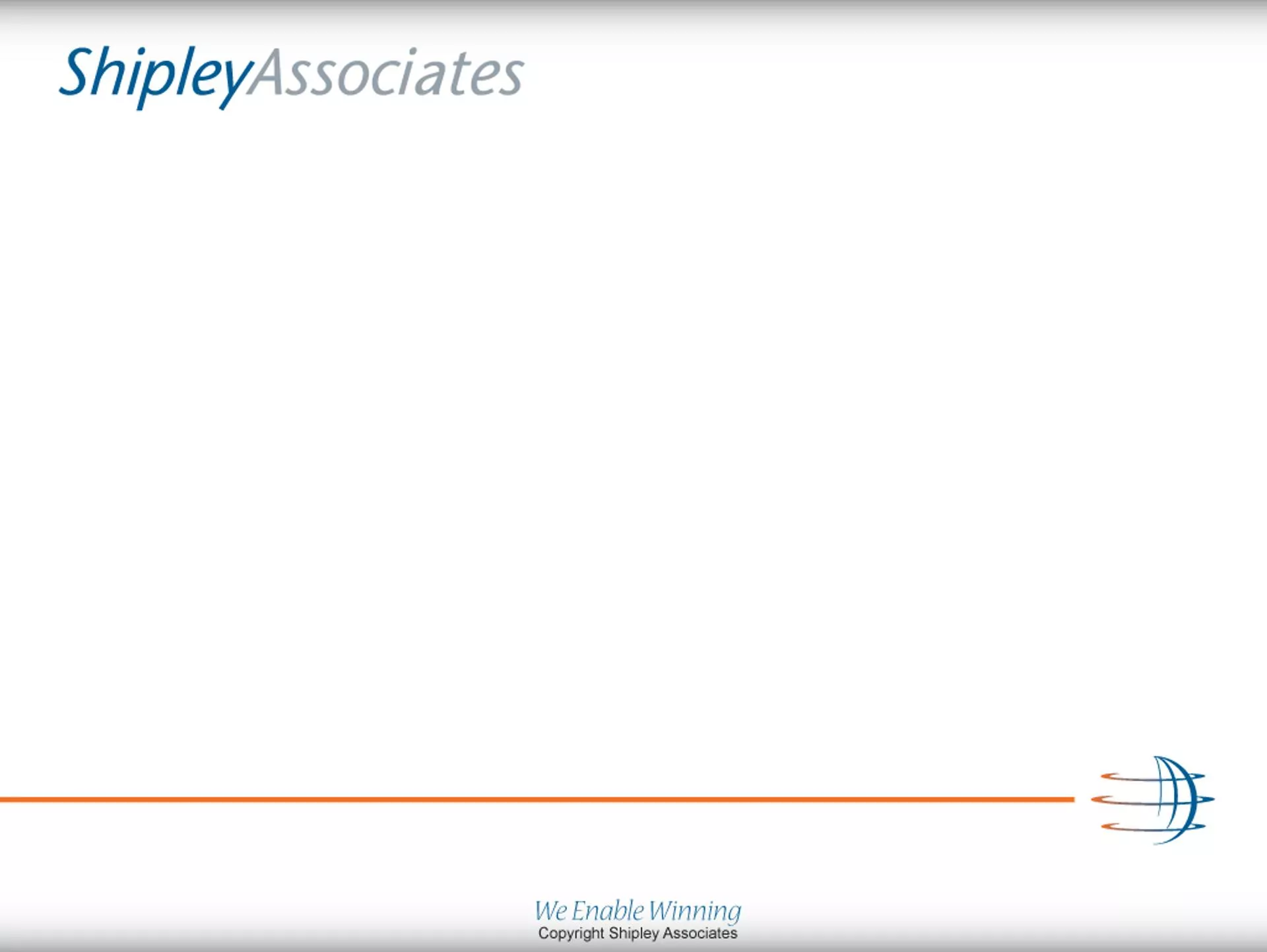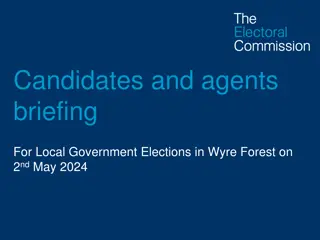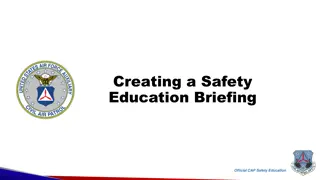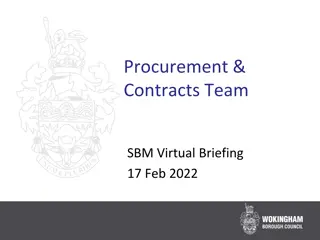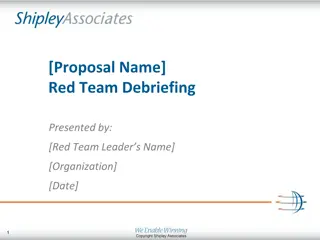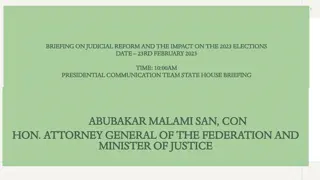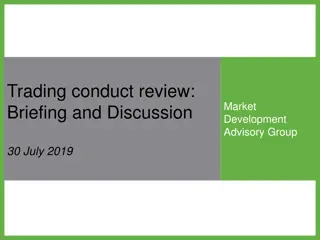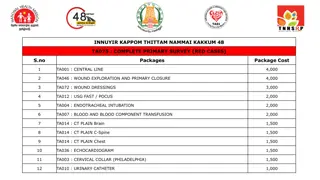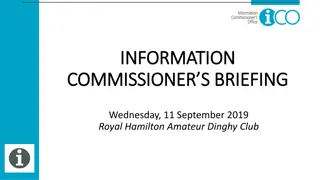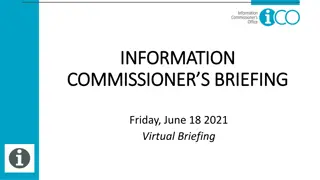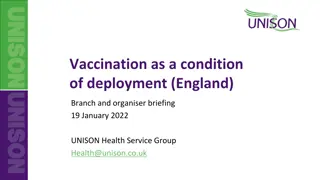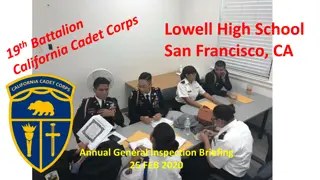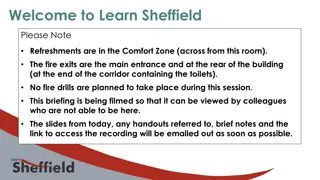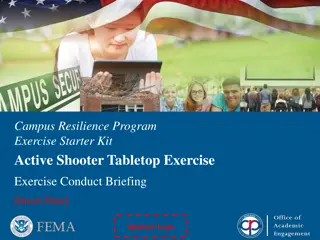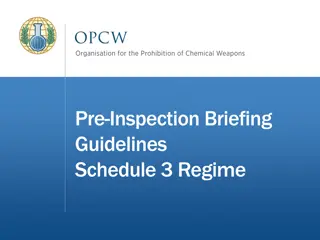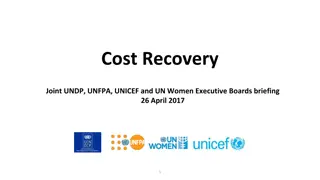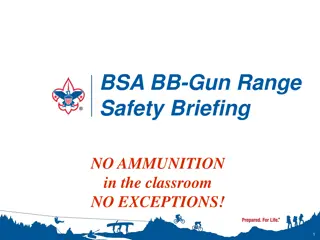Red Team In-Briefing Overview
This document provides an overview of the Red Team in-briefing process, including the agenda, organization, management, assignments, and purposes of the Red Team. It outlines the tasks performed by the Red Team and emphasizes the importance of clear organization, division of labor, and thorough evaluation to ensure proposal quality and effectiveness.
Download Presentation

Please find below an Image/Link to download the presentation.
The content on the website is provided AS IS for your information and personal use only. It may not be sold, licensed, or shared on other websites without obtaining consent from the author. Download presentation by click this link. If you encounter any issues during the download, it is possible that the publisher has removed the file from their server.
E N D
Presentation Transcript
[Proposal Name] Red Team In-Briefing Presented by: [Red Team Leader s Name] [Organization] [Date]
In-Briefing Agenda Red Team organization and assignments Purposes of the Red Team Proposal background Red Team operations Debriefing the Red Team review 2
Red Team Schedule Date Time Event Background reading for team members Red Team in-briefing Vertical and horizontal reviews Consolidate results and prepare Debriefing presentation to proposal team 3
Red Team Organization and Assignments The compressed Red Team schedule demands clear organization and division of labor. Each member must accomplish assigned tasks in the prescribed manner to ensure the entire proposal is effectively reviewed and comments can be acted upon efficiently. 4
Red Team Management Red Team Chairperson [Name] Management Lead [Name] Technical Lead [Name] Past Perform- ance Lead [Name] Cost Lead [Name] Mirrors anticipated evaluation team structure Provides focal points to coordinate dual review coverage of all proposal sections 5
Red Team Assignments Primary reviewers coordinate input on sections Secondary reviewers furnish additional insight Horizontal reviewers evaluate specific aspects of proposal 6
Purposes of the Red Team The Red Team evaluates the proposal from the customer s perspective. Members come from outside the proposal team. 7
Purposes of the Red Team Emulate source selection evaluation process to predict proposal scoring Determine compliance to solicitation and responsiveness to customer hot buttons Conduct independent assessment of proposal s quality and effectiveness Recommend detailed improvements 8
Proposal Background Information about the opportunity will help orient the Red Team and make the review more efficient. 10
Opportunity Description [The capture manager should present a brief summary of the business opportunity] [Information can be taken directly from the capture plan (if one was prepared) or kickoff briefing] 11
Review of Key Solicitation Sections [Proposal manager discusses main features of solicitation] [Include any unusual elements] [Describe solicitation features that increase risk] [Discuss discrepancies in solicitation; if federal RFP, between Sections L, M, and C] [Inform team members where they can find applicable solicitation information (handouts, pre-populated review forms, or solicitation copies)] 12
Competitive Landscape [Identify principal competitors] [Introduce customer hot buttons] [Reference a bidder comparison chart to explain origin of strategies] 13
Solution Overview [Solution architect or program manager briefs technical solution] [Keep simple] [Make it clear reviewers must not factor this information into the review] [Purpose is to inform Red Team what is being proposed, not justify or explain the solution] 15
Win Strategy [Capture manager briefs overall strategy] [Discuss price-to-win if doing so does not endanger proprietary information] [Identify key discriminators and tie to bidder comparison chart] 16
Red Team Operations To maximize benefits to the proposal team, the Red Team will follow a proven, structured operational approach. This approach standardizes scoring, risk assessments, and feedback formats to increase utility of the critique. 17
Two Types of Review Vertical Section by section Primary and secondary reviewers Numerical scores Proposal and performance risk assessments Horizontal Evaluates use of style and emphasis tools Determines consistency across document 18
Red Team Member Responsibilities Responsibility Vertical Horizontal Review assigned section(s) Evaluate strengths and weaknesses Evaluate compliance and responsiveness Identify deficiencies Identify areas needing clarification Recommend specific improvements Provide numerical score and risk assessments Check for inter-volume compatibility Prepare debrief for proposal team 19
The Vertical Review: Commenting on the Proposal Fill out review form for each assigned section Identify solicitation and/or proposal references Identify and comment on strengths and weaknesses Describe deficiencies or needed clarifications Provide clear and concise recommendations for corrective actions Score compliance and responsiveness on 0-10 scale Assess risks as high, moderate, or low Obtain consensus and assign final numerical score and risk assessments (primary reviewer) 20
Form for Vertical Review Reference information Strengths and Weaknesses Comments and Problems Recommendations Scoring Disposition 21
Scoring Guidance for Compliance and Responsiveness Compliance and Responsiveness Scoring Color Numbers Adjectives Compliance and Responsiveness Criteria The section is compliant and responsive and clearly substantiates added value beyond requirements. The offering is clearly superior and is well presented. The section is compliant and responsive, with no deficiencies and only minor weaknesses. A minimally compliant section just meeting requirements earns a 5. The section is only partially compliant or responsive, fails to fully address requirements, or does not adequately substantiate claims. It contains weaknesses in several areas or a significant weakness. The section is non-responsive or non-compliant to specific requirements. The response is largely or totally unsubstantiated or exhibits one or more deficiencies. Blue 8-10 Outstanding Green 5-7 Good Yellow 3-4 Marginal Red 0-2 Unsatisfactory 22
Scoring Guidance for Proposal and Performance Risk Color Scoring Proposal Risk Criteria Performance Risk Criteria Unlikely to cause disruption of schedule, increase in cost, or degradation of performance; normal offeror emphasis and normal customer monitoring will probably overcome difficulties. Can potentially cause some disruption of schedule, increase in cost, or degradation of performance; however, special contractor emphasis and close customer monitoring will probably overcome difficulties. Likely to cause significant, serious disruption of schedule, increase in cost, or degradation of performance, even with special contractor emphasis and close customer monitoring Little doubt exists, based on the offeror s performance record, that the offeror can perform the effort. Green Low Some doubt exists, based on the offeror s performance record, that the offeror can perform the effort. Yellow Moderate Significant doubt exists, based on the offeror s performance record, that the offeror can perform the effort. Red High 23
Develop Your Personal Review Plan Suggested Process: 1. Based on the cross reference matrix, identify solicitation sections (including evaluation criteria) applicable to your review assignment. 2. Identify portions of the compliance/requirement checklist provided by the Red Team leader applicable to your assigned section. Use these in your review for compliance and responsiveness. 3. If no compliance/requirement checklist is provided, you must work from solicitation paragraph references applicable to your assigned proposal section. 24
Reviewer Guidelines Reviewers often read only within their comfort zone, and edit details rather than reviewing for sound solutions, compliance, responsiveness, and reasons the customer should score this proposal highly. Don t: Edit for grammar; this is better left to the editor Criticize writing style; look for accuracy Recommend new ways to redesign pages Revise material so it sounds better to you 25
Reviewer Guidelines (continued) Do: Read your assignment with purpose of solicitation in mind Review material that falls in your area of expertise Consult with others if you need more information Offer suggestions for presenting information Review your comments with topic head Consult with others who need your expertise 26
Hints for Red Team Members Think like customer s evaluation team Limit evaluation to proposal content nothing else Insist that each volume: Answer the question Why Us? Contain effective themes with well-defined benefits Substantiate all claims Contain easily-understood visuals with strong action captions Incorporate easy-to-find discriminators Contain short, concise sentences (active, not passive) Avoid tutorial narrative and technical arrogance 27
The Horizontal Review: Checking for Consistency Answer all questions on form for assigned review type (1st, 2nd, 3rd, or 4th) Make detailed comments referenced to questions Proposal manager makes disposition 28
Form for Horizontal Review (p. 1) Reference information Questions Theme statements Visuals and action captions Outline and section headings 29
Form for Horizontal Review (p. 2) Questions (cont.) Outline and Section Headings (concluded) Callouts Comments and disposition 30
Debriefing the Red Team Review The Red Team must present its findings and recommendations to the proposal team, which then determines how to improve the proposal. A better review results when the Red Team knows the debriefing approach in advance. 31
The Red Team Debrief Consolidate and present findings for each major section and volume Identify strengths and weaknesses for each section Present scores and accompanying rationale for each evaluation area Make recommendations for quality improvements Specify deficiencies Recommend priorities for applying resources to address Red Team comments 32
The Red Team Debrief (continued) Transfer review forms to proposal manager Meet with volume leaders or authors to discuss recommendations Be available for follow-up 33



